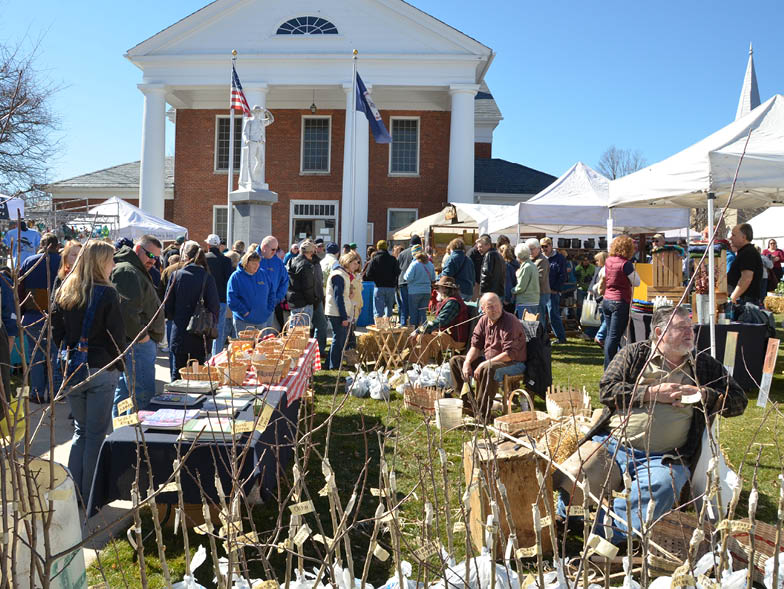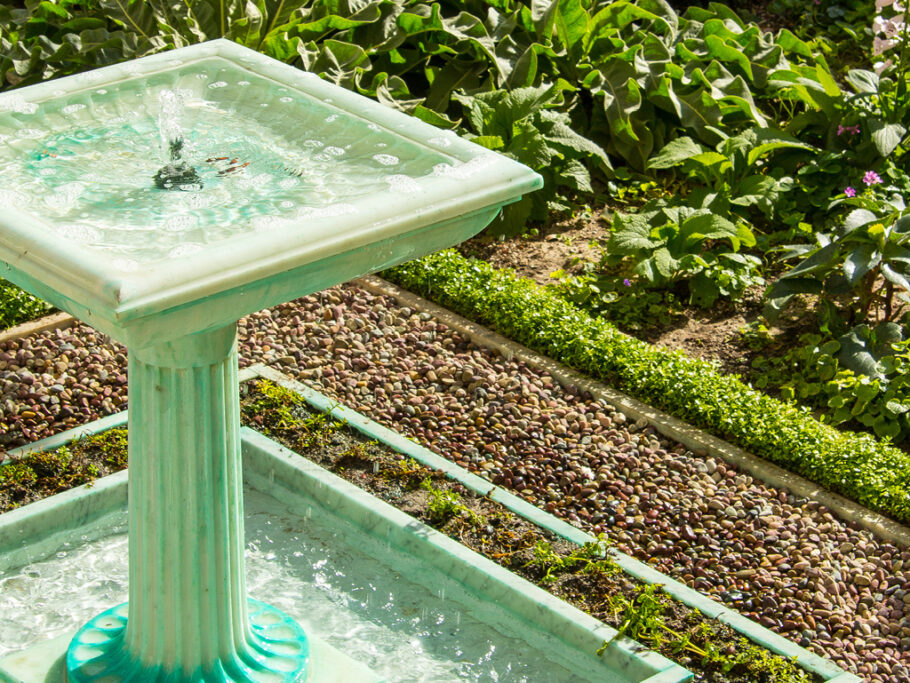All About Maple
You might be surprised to learn that some of the finest maple syrup comes not only from Vermont and Canada but also from a small county at the very western border of Virginia.
Highland County, Virginia, sometimes referred to as “Virginia’s Little Switzerland,” is 416 square miles nestled in the Allegheny Mountains due west of the Shenandoah Valley and east of the West Virginia border. It’s a region of high mountains and deep valleys, grazing sheep and cattle, and expansive woodlands.
With a population of approximately 2,300, Highland is the smallest county in the state, and it has often been lovingly described as a “step back in time” where people wave to strangers and help their neighbors in times of need, explains Donna Bedwell, who grew up in the area, has been an active volunteer here, and serves as president of the Highland County Tourism Council. “The friendly, trusting, and helpful nature of the citizens of Highland is not only part of our culture,” she says, “but also one of the county’s strongest assets. I have heard it said that ‘the mountains bring visitors to Highland, but the people make them stay.’ I would agree with that.”
What also brings people to the area in droves is the maple syrup—lots of maple syrup. Sugar production in the region has been a way of life for centuries as have sugar camps, sometimes called sugarhouses, at which tourists can witness maple sugar being made. “I remember just one sugar camp being open when I was small: Hevener’s Sugar Camp, just west of the town limits of Monterey,” says Kirk Billingsley, son of one of the festival’s founders and now owner of Big Fish Cider Company, which makes hard and sweet ciders, including one made with maple syrup. Even though Hevener’s still makes maple syrup, it is closed as a sugar camp; however, other camps opened a few years later to take its place. Today, there are seven camps in the county that are open to the public and many others that are not.

Highland’s location is what drives its maple production. At an average of about 2,800 feet above sea level, the area is in a prime position to produce high-quality maple syrup. Ivan Puffenbarger, patriarch of Puffenbarger’s Sugar Orchard, notes that the area “is perfect for making maple syrup because of our higher elevation in the Allegheny Mountains. We need the freezing and thawing effects in the springtime—cold nights below freezing and warm days.”
The Maple Festival
To celebrate the maple syrup industry’s longtime heritage in the region, the Highland County Maple Festival is held on the second and third weekends of March, just as it has been each year since 1958. Tens of thousands flock to this quaint region of unspoiled small towns tucked into curvy mountain roads to celebrate all things maple—and to enjoy a weekend experiencing a lifestyle of days gone by.
The festival was founded by the Highland County Chamber of Commerce, which decided to stage an open house at a maple sugar camp to promote the county’s maple syrup. Billingsley likewise recalls the humble beginnings of the Maple Festival: “I remember Clinkers, a candy made with maple syrup that was sold on Main Street, and I remember a local blacksmith that would set up in front of the Highland Inn. The festival used to be centered in the town of Monterey with very few other activities, but now all of our community civic clubs are serving fresh pancakes in their local communities.”
The festival has expanded to the point that it regularly hosts 60,000 visitors per year—over twenty-five times the county’s population—so every resource in Highland County is involved in providing food and entertainment. While Monterey is still the county seat and the center of much activity, the civic organizations, businesses, and residents of Blue Grass and McDowell also provide food, crafts, and events. “I have volunteered in one way or another for all my life,” says Billingsley. “I’ve made and served pancakes at the schools, helped the Lions Club serve hamburgers and pork rinds, and made donuts with the Mill Gap Ruritans and funnel cakes for my local church. When you live here, it’s really hard not to get involved. We are a county of 2,300 people trying to accommodate tens
of thousands, so most everyone who lives here really pulls together and does our best to show off Highland.”

And because of that effort, the Maple Festival has earned recognition in recent years. “It was designated a Local Legacy by the Library of Congress in 1999, and it was named the Official Maple Festival of the Commonwealth of Virginia in 2015,” says Bedwell, who has attended every festival, as have most residents. “When I lived in other areas of the state and was asked where I was from, most people would respond to my answer with ‘Oh, yes, the Maple Festival.’”
When you attend the Maple Festival, you can expect to be mesmerized by the craftsmanship of resident artisans, musicians, and dancers. Basket weaving and furniture making are among the skills on display during the festival, and you can also purchase a variety of other arts and crafts, including clothes, paintings, pottery, quilts, and jewelry. Plus, there’s entertainment for young and old alike, with bluegrass music and clogging (a folk dance similar to Irish step dancing or tap dancing) shows on the agenda.
But the maple-flavored foods are the main attraction and, in themselves, make the trip memorable. A must-try is the maple-flavored doughnut, which is unlike any doughnut you’ve ever tasted before. Likewise, the buckwheat pancakes topped with Highland-produced maple syrup are amazing. The festival also offers a variety of other mouthwatering maple-flavored foods, including maple-glazed chicken, maple pork BBQ, maple baked beans, maple cotton candy, and maple fudge. For dessert, make sure to try the handmade vanilla ice cream with maple drizzle or a maple milk shake while you can—they sell out quickly! In addition, many local shops and maple syrup producers bottle their syrups and sell them to the public, so you can take the taste of the festival home with you.
If you get all mapled out (if that’s possible), the festival also serves local fare, including country ham sandwiches and trout sandwiches along with traditional festival foods like burgers, hot dogs, and funnel cake, with everything cooked by county church, civic, and athletic groups.
As far as seeing attractions during your visit, make sure to take a drive to one of the seven maple sugar camps, where you’ll learn firsthand how maple syrup is made, from the time the tree is tapped to the final product. (Dress appropriately, though: it tends to be cold and muddy.) For more education about making maple syrup and area history and culture, you can visit the Highland County Museum and Heritage Center in McDowell. While in Monterey, tour the beautifully restored and maintained Highland Inn, a Virginia State Historic Landmark that was built in 1904. The Queen Anne-style country inn features a farm-to-table restaurant and eighteen rooms and suites that fill up quickly with Maple Festival visitors.

The Highland County Maple Festival impacts the whole Highland community, ensuring the cultural heritage of the county as well as the survival of its maple sugar industry. After visiting the Maple Festival, the good taste in your mouth will stick with you—both literally and figuratively. You’ll relish fond memories of the maple masterpieces you tasted and will want to make maple a staple in your everyday eating.
More important, you will also leave with a better appreciation for not only the maple- making process, but also how a people can still come together for a shared goal of strengthening their community.
Tours
Tours are offered at various sugar camps and shops in Highland County. Here are three examples: Laurel Fork Sapsuckers is a small, family-run sugar camp ten miles west of Monterey. The folks there welcome hands-on participation. Guests can witness the traditional wood-fired method of producing maple syrup because Laurel Fork uses one-hundred-year-old, locally made open pans in the production process. During the Maple Festival, the Moyers family invites guests to enjoy various outdoor kids’ activities, homemade apple pie, a tree-tapping demo and a guided tour of the sugar camp on both weekends of the festival, maple tours all day, and more.
Duff’s Sugar House, southwest of Monterey, is another small, family-run sugarhouse, and its trees are still “opened” by hand. The sugar water is then collected in buckets and cooked in a wood fired open pan and finished in an iron kettle. Duff’s also allows guests to join in, and tours are offered all day long.
Puffenbarger’s Sugar Orchard, on Maple Sugar Road, is a rebuilt sugar camp that was destroyed by fire in 2008. A vacuum pump is still used to increase the flow of sugar water, and miles of plastic tubing make it easier to gather. The process of making maple syrup begins with reverse osmosis and finishes with oil-fired evaporators. The Puffenbarger family serves warm maple doughnuts and other food during the Maple Festival tours that run all day.
For more info, visit highlandcounty.org.























